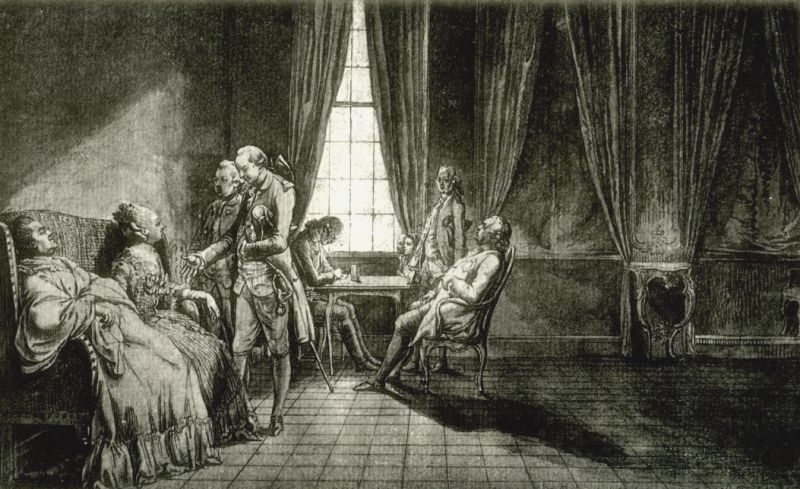Daniel Chodowiecki – The Polonica
Mediathek Sorted

![Ill. 2: Cabinet d’un peintre [Cabinet of a painter] Ill. 2: Cabinet d’un peintre [Cabinet of a painter] - Etching, 18 x 23 cm. Depicted is part of Chodowiecki's family.](/sites/default/files/styles/width_100_tiles/public/assets/images/2_mit_familie.jpg?itok=Ox3Ojmp4)
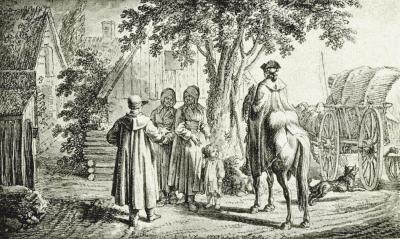
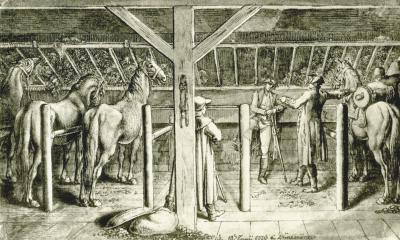
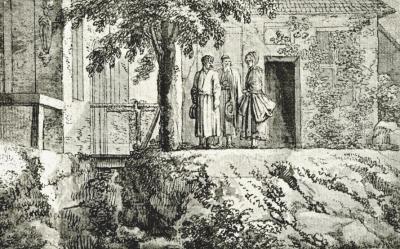
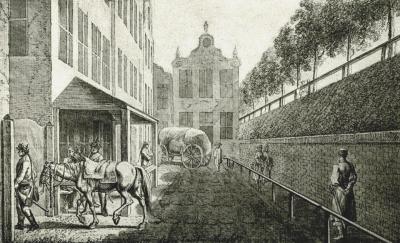
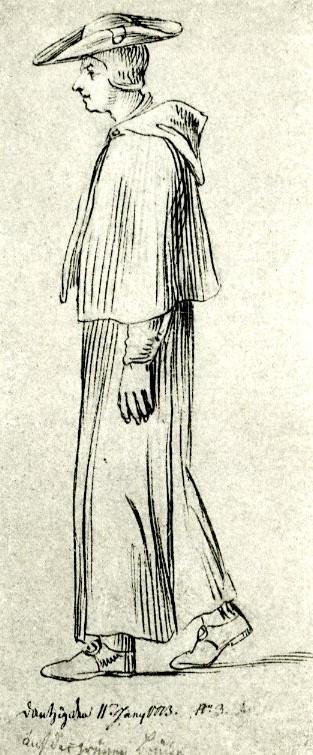
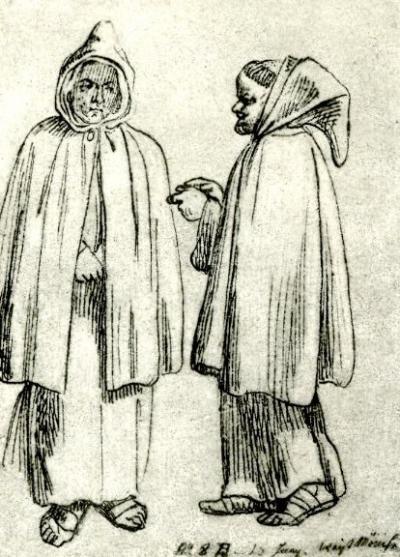

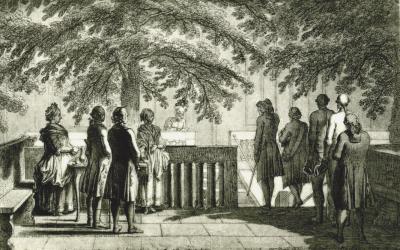
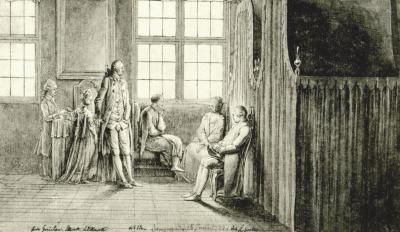
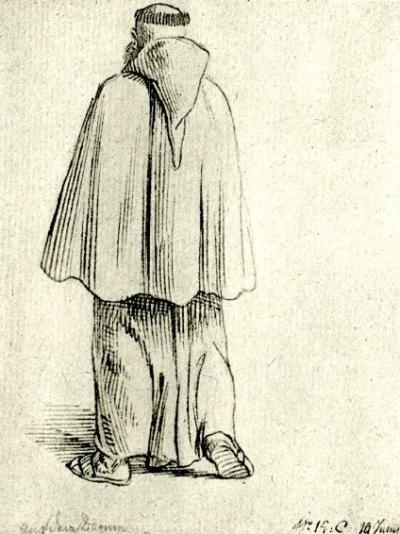
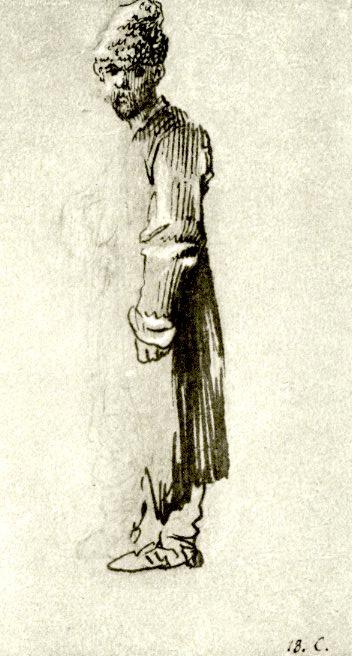
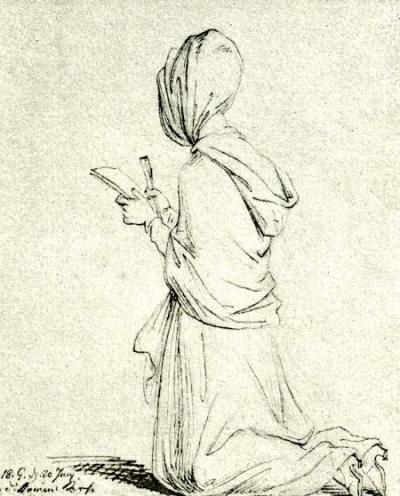

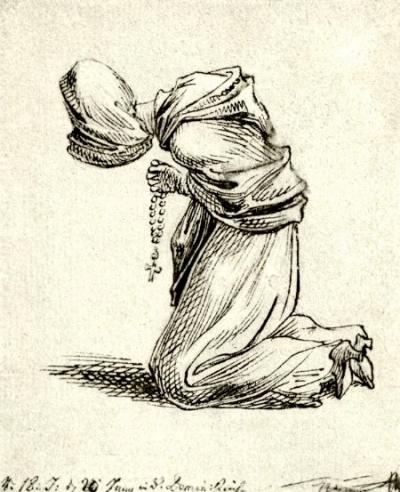
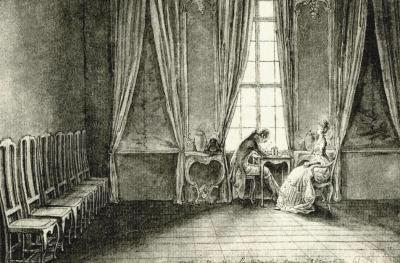

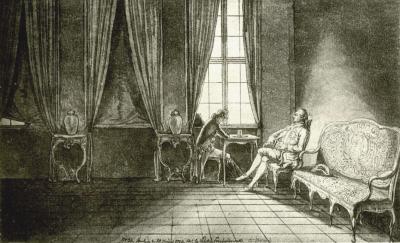
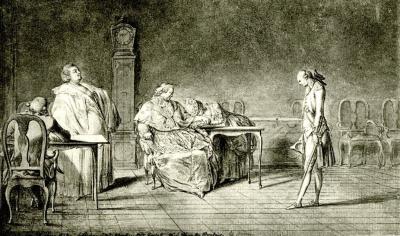
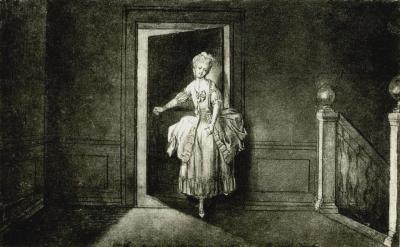
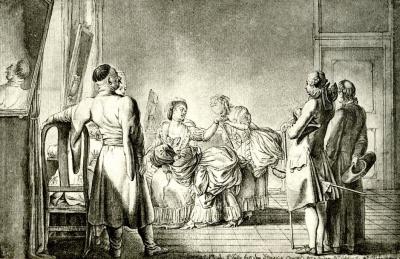



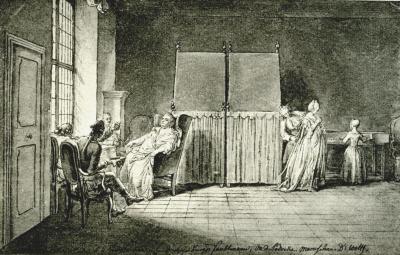
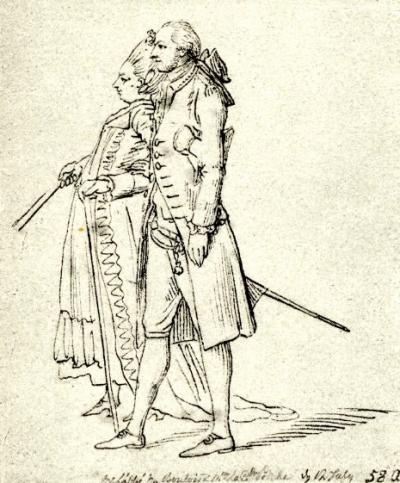

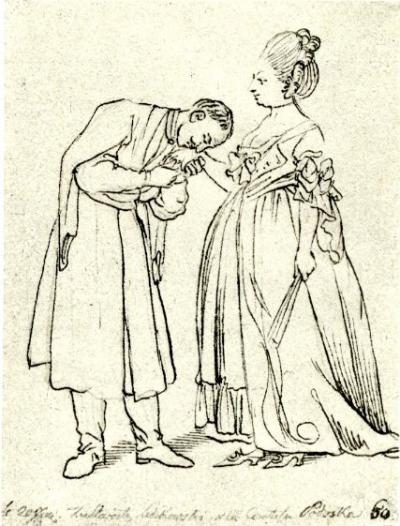
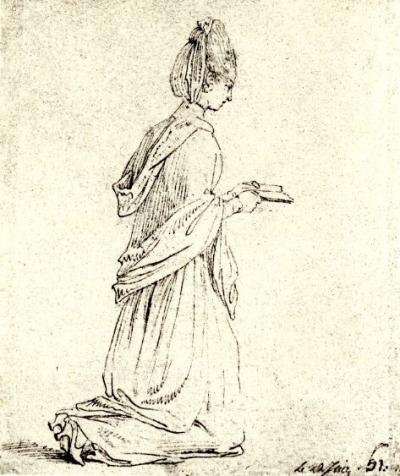
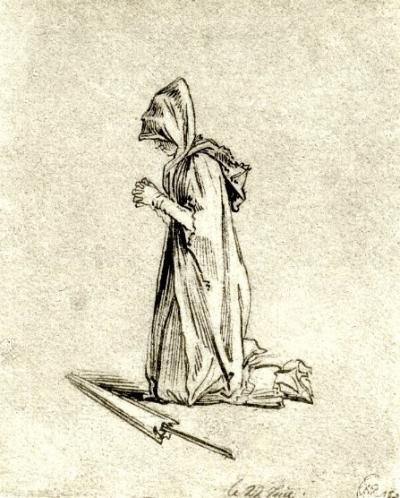
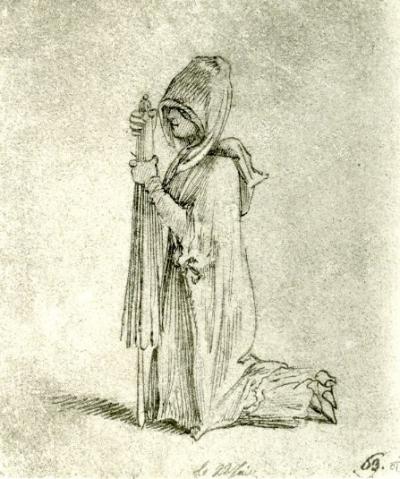
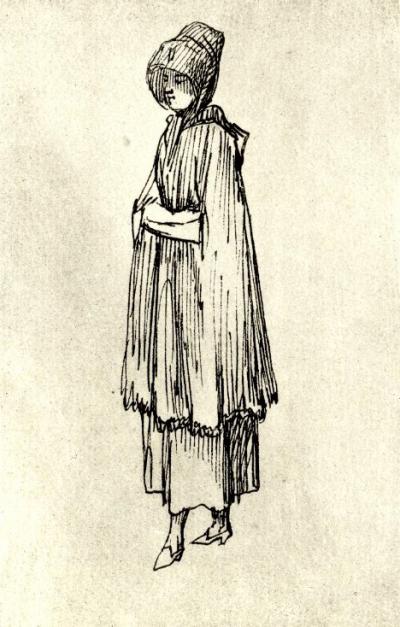

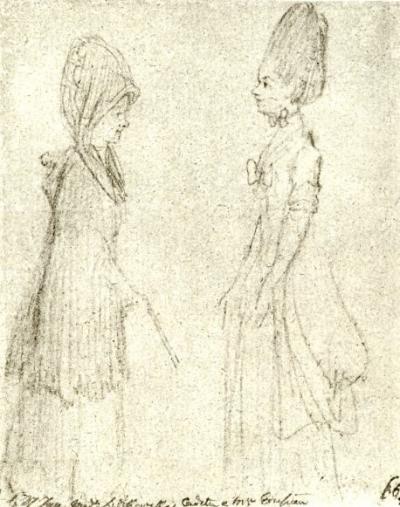

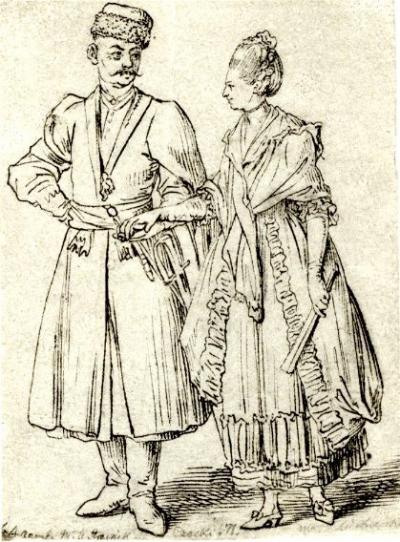
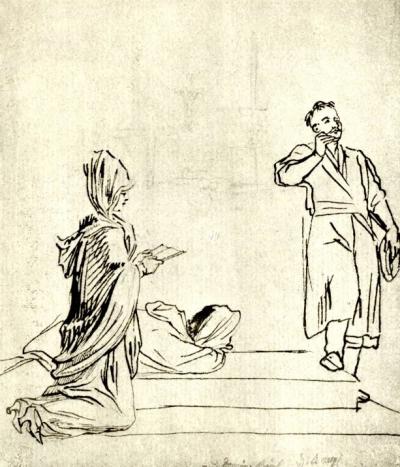
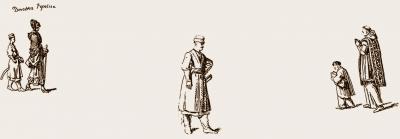
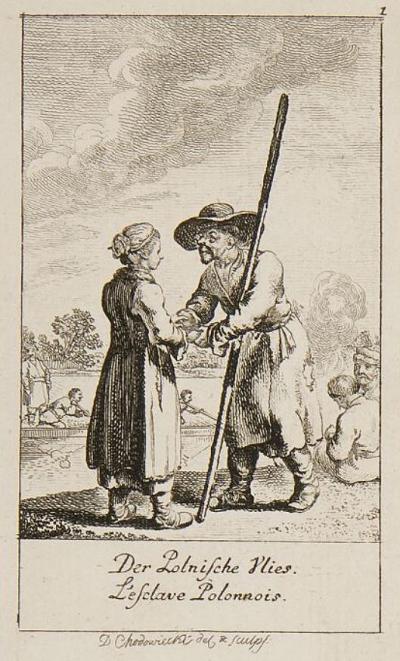
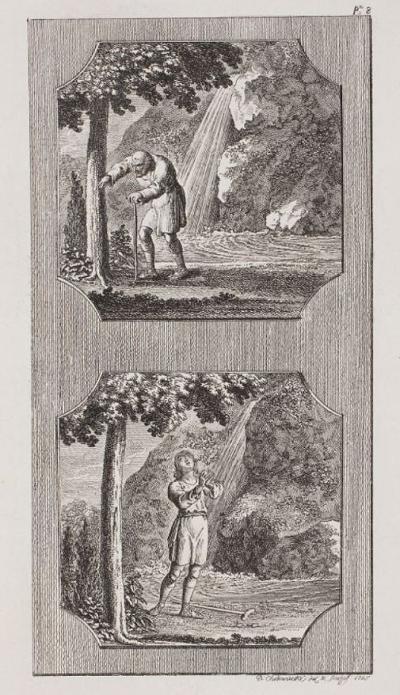
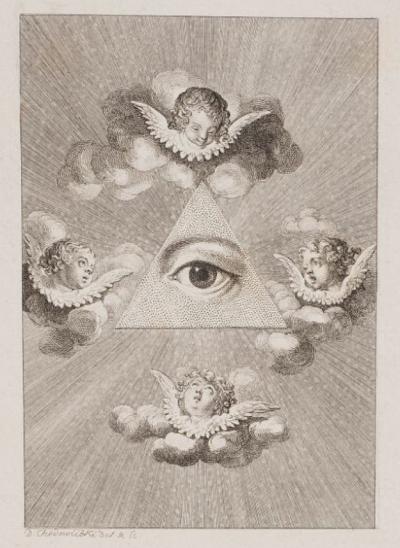

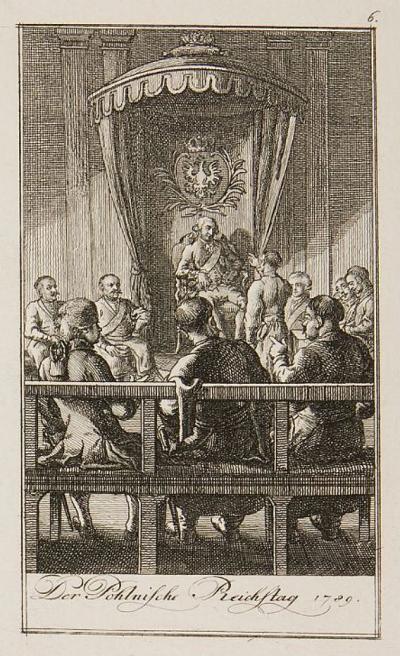
![Ill. 45: The new Polish Constitution Ill. 45: The new Polish Constitution - Etching, in: Begebenheiten aus der neueren Zeitgeschichte [...], Göttingen 1793.](/sites/default/files/styles/width_100_tiles/public/assets/images/45_polnische_verfassung.jpg?itok=8ZtNsUvt)
![Ill. 46: The celebration of Poland's great revolution Ill. 46: The celebration of Poland's great revolution - Etching, in: Sechs Blätter zur neueren Geschichte [...] 1793.](/sites/default/files/styles/width_100_tiles/public/assets/images/46_revolution_polens.jpg?itok=1TH3eNK0)

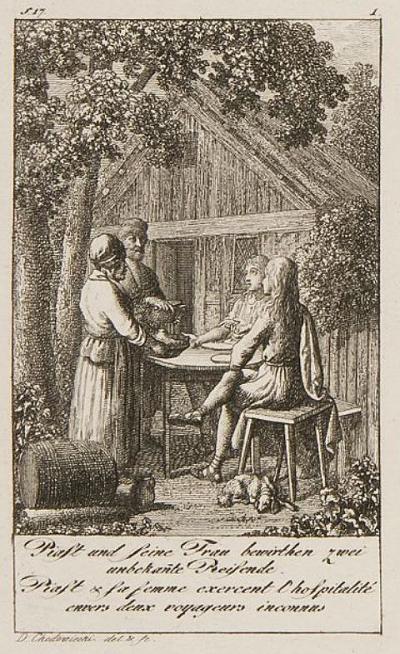
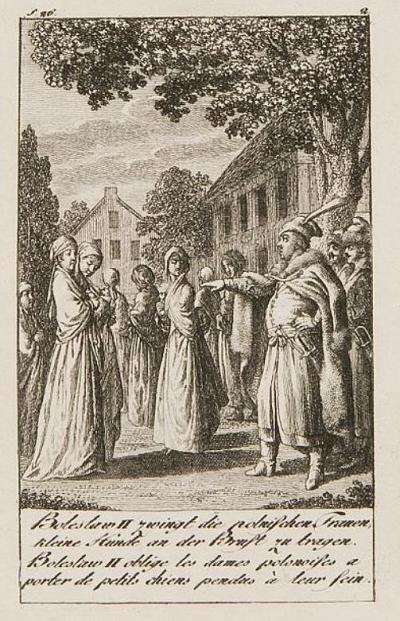

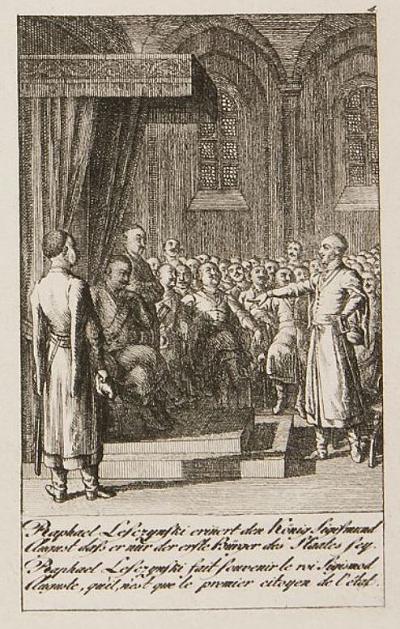



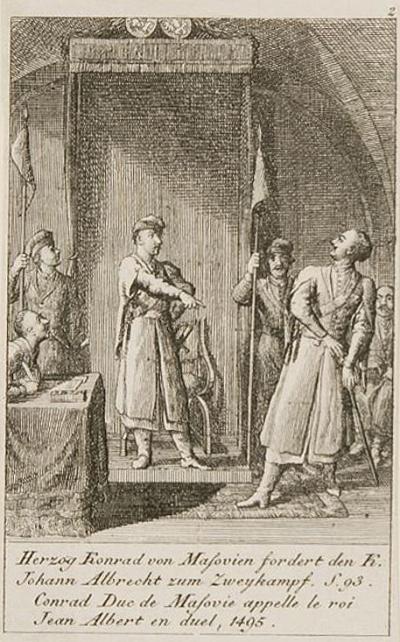
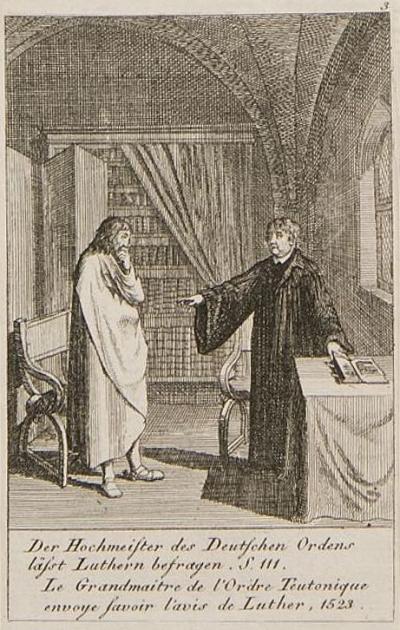


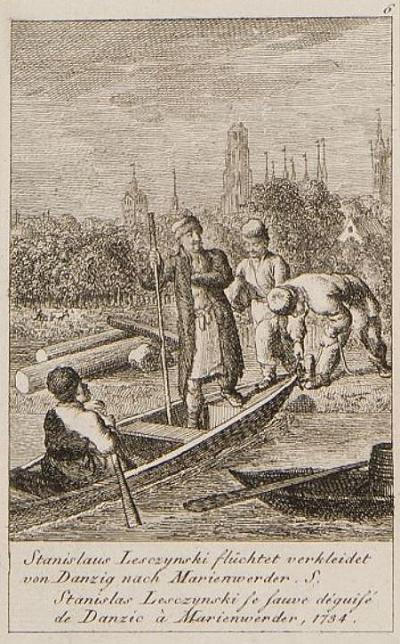
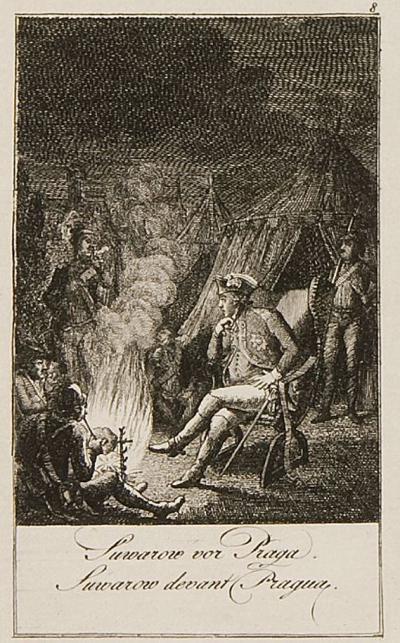



Daniel Chodowiecki - Hörspiel von "COSMO Radio po polsku" auf Deutsch

![Ill. 2: Cabinet d’un peintre [Cabinet of a painter] Ill. 2: Cabinet d’un peintre [Cabinet of a painter] - Etching, 18 x 23 cm. Depicted is part of Chodowiecki](/sites/default/files/styles/width_100_tiles/public/assets/images/2_mit_familie.jpg?itok=Ox3Ojmp4)










































![Ill. 45: The new Polish Constitution Ill. 45: The new Polish Constitution - Etching, in: Begebenheiten aus der neueren Zeitgeschichte [...], Göttingen 1793.](/sites/default/files/styles/width_100_tiles/public/assets/images/45_polnische_verfassung.jpg?itok=8ZtNsUvt)
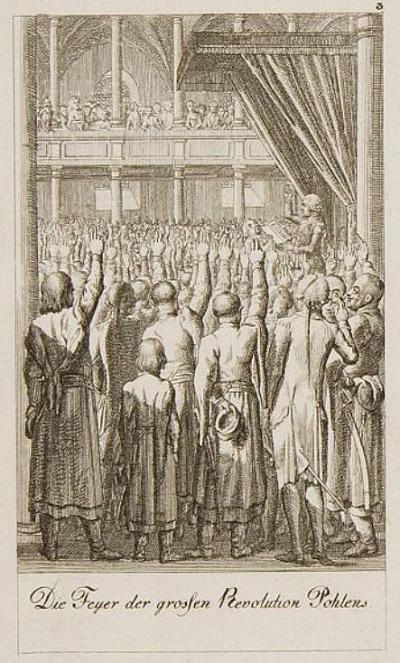


















In 1793 Chodowiecki wrote the following about his origins “To some extent I am also one of these good people [the respectable réfugiés who were forced to leave their fatherland 100 years ago and who were revered and loved everywhere they arrived, and who also did a lot of good in Germany], for my grandmother on my mother’s side was a réfugiée, although my father was a Polish citizen, a descendant of a courageous nation that will soon no longer exist.”[1] 1793 was the year of the Second Partition of Poland. The so-called réfugiés were therefore refugees, Huguenots, French Protestants who had been repressed by the clergy and monarchy in France since 1530. The Edict of Fontainebleau issued by Louis XIV in 1685 was as good as the equivalent of a ban on Protestantism. It triggered off the flight of a 250,000 Huguenots in the areas of Europe that were dominated by Protestants. Daniel’s mother, Marie Henriette Ayrer (*1702), came from a Huguenot refugee background on both sides of the family. According to Daniel, his Polish ancient ancestors could traditionally be traced back to the aristocrat Bartłomiej Chodowiecki, who lived in Greater Poland in the mid-16th century. But as early as the 17th century it was not possible to prove their aristocratic title, nor is it mentioned in Polish books on coats of arms.[2] Daniel’s direct forefathers were theologians and corn dealers in Thorn. His grandfather Christian (*1655) moved to Danzig because trading conditions were better there: here he ran a corn business that was taken over by his son, Gottfried/Godfryd (*1698). This was Daniel’s father. After Daniel’s parents were married they joined the Reformed Church in Danzig and orientated themselves around the culture of French immigrants. The upshot was that they spoke French. French was therefore Daniel Chodowiecki’s mother tongue. But he also spoke German and a little Polish. From their grandfather’s inheritance the family bought a house in Heiliggeistgasse.
Biography
Daniel Chodowiecki was born in Danzig (Gdansk) on 16th October 1726. He seemed to have had a happy childhood. One of his father’s hobbies was painting cameo portraits and he taught Daniel how to draw. After his father died in 1740 Daniel began training as an apprentice dealer in spices and food. Alongside these studies, and with the support of his aunt, he continued studying the art of drawing on his own initiative. In 1743, at the age of 16, like his younger brother before him, he moved to Berlin to work in the hardware store of his uncle Antoine Adrien Ayrer. Here both brothers made cameo copies of etchings, with which they decorated tins. In 1748/49 Daniel was taught enamel painting by the Augsburg copper engraver, Johann Jacob Haid (1704-1767). True, Daniel’s earliest extant drawing, “A Polish Jubilee year and Repentance Homily drawn in Kraków“ (1750), had a Polish motif, but it was probably a copy of a work by a man named Georg Christoph Kilian (1709-1781)[3] : it was entitled “A Polish Jubilee year and Repentance Homily drawn in Kraków“ (1750).[4] In 1754 he decided to become an artist in his own right, took up lessons in drawing from the Berlin history painter Bernhard Rode (1725-1797) and attempted to make contact with other successful young painters and etchers like Antoine Pesne, Joachim Martin Falbe and Blaise Nicolas Le Sueur, who became the director of the Berlin Akademie der Künste in 1756.
In 1755 Chodowiecki married a woman by the name of Jeanne Barez (1726-1785), who was part of the French colony in Berlin. In 1757 he began experimenting in intaglio printing as can be seen from the fact that his first etching was dated in the same year. Based on one of his earliest intaglios, he probably finished his earliest oil painting in 1758: “A Young Peasant with a Bandaged Face” (National Museum Danzig / Muzeum Narodowe w Gdańsku). In the summer of the same year he began studying drawings of natural anatomy and specialised in red chalk and pencil drawings of women doing domestic work. However, after the birth of his first child in 1761, his interest in this theme began to wane. The Chodowieckis had five children in all, the last of whom was born in 1770: all of them were later artists of one kind or another. In 1764 Daniel was named a member of the Royal Prussian Academy of Arts and Mechanical Sciences in Berlin. After his first creative periods as an etcher between 1758 and 59 and 1763 and 64, he began a continuous period of small format etchings in 1767. The result was more than 2000 works. That said, he earned the necessary livelihood to support his family mainly from cameo portraits and porcelain painting on tins.[5] In 1773 he travelled to Danzig and Silesia. In the same year he met up with two artist friends in Dresden, Anton Graff (1736-1813) and Adrian Zingg (1734-1816). In 1779 the first list of his etchings was published, and in the following year he published his autobiography. After his mother’s death he travelled once more to Danzig in 1780. From 1782 onwards he was committed to reforming the Berlin Academy and he managed to push through these reforms in 1786 as its secretary and one of the six rectors. In 1790 he became a vice- principal, and in 1797 he succeeded Bernhard Rode as the Director of the Academy. Daniel Chodowiecki died in Berlin on 7th February 1801. (Ill. 1)
A survey of his work
As much as Chodowiecki’s most prominent activities where porcelain and cameo paintings, his so-called “Family Print”, entitled “Cabinet d’un peintre” (1771) clearly shows him painting the lid of a tin in the presence of his family. It was dedicated in French to his mother, “Madame Marie Henriette Ayrer, widow of the late Mr G. Chodowiecki“. (Ill. 2). In 1765/66 he aroused great public interest with a history painting entitled “Jean Calas taking leave of his Family before his Execution on the 10th of March 1762” (Staatliche Museen zu Berlin, painting gallery); the etching version made Chodowiecki a reputation far and wide. From now on, however, he gave up history pictures in favour of painting small format domestic scenes of the middle-classes. By contrast his historical motifs, including events from Polish history, were etchings. In 1769 he began work on 12 illustrations of Gotthold Ephraim Lessing’s “Minna von Barnhelm” for the “Berlin Genealogical Calendar”, and a long succession of etchings for calendars and almanacs. These are generally regarded as stiff, because the artist was compelled to create striking scenes of figures with sweeping gestures in a small upright format, often in parallel succession
Chodowiecki drew relentlessly wherever he was, on the street, at receptions and balls, sitting, standing, riding, travelling, mostly in such a way that the persons he portrayed did not notice. When, on social grounds, it was necessary to keep at a discreet distance from a lady in her bedroom, he even drew through the keyhole. He made unique portraits of people’s customs and scenes from contemporary everyday life. The upshot was that he received commissions to illustrate the work of all types of writers on “sentimental and joyful stories, fashion portraits, and simple and tragic stories of mendacious and reckless people”, as in the already-mentioned small volume that appeared 100 years ago. [6] He was a keen painter of “the dark sides and perversities of contemporary society, preferring to do this by setting off good and evil, beauty and ugliness.” But what is lacking in his work is the elegance of French rococo, say by Antoine Watteau, who had died as early as 1721, and the acidity of the English caricaturist William Hogarth (1697-1764), whose works were clearly known to Chodowiecki because he possessed a huge personal collection of etchings which he also bought and sold. His drawings of the real lives of people and the scenes he personally witnessed gave rise to highly amusing prints. That said, it was generally agreed that he found it very difficult to empathise with historical events when portraying them. Thus his yearning to be recognised as a history painter was never fulfilled.
Nonetheless Chodowiecki achieved fame and recognition with his 200 drawings which he began in 1769 for the educational “Elementary Work for Young People and their Friends” by Johann Bernhard Basedow (1724-1790), published in 1774 with 100 of his etchings. Here, in accompanying lessons, children could become acquainted with all areas of life from carefree games to detailed portraits of different professions. Similarly comprehensive and well known were Chodowiecki’s physiognomic studies for a four volume work published between 1775 and 1778, entitled “Physiognomic Fragments to Promote the Knowledge of People and Philanthropy” by Johann Caspar Lavater (1741-1801). During Chodowiecki’s ten-week journey to Danzig in 1773 he kept a very detailed diary that, along with 108 drawings, became a celebrated document of contemporary life. In Danzig, alongside cameo portraits, he also drew profiles in red chalk, a style that had just come into fashion. After a somewhat naive portrait of his own family in the Berlin Tiergarten in 1772 (Märkisches Museum, Berlin) he clearly stopped painting for good.
From then on Chodowiecki confined his artistic activities to the increasing number of commissions to illustrate calendars, including the “Berlin Genealogical Calendar”, covering 13 years between 1770 in 1790, the “Historical Genealogical Calendar“ (8 years between 1793 and 1803), the “Gotha Court-Calendar“ (1778, 1780-94), Georg Friedrich Lichtenberg’s “Goettinger Pocket Calendar“ (1779-94) and the “Royal Great Britain Historical Genealogical Calendar” (1778-96) that was published in Lauenburg. Most of these were in sequences of 12 pictures: they included illustrations from Cervantes, Shakespeare, Salomon Gessner, Lessing, Gellert and Schiller, moralising cycles similar to William Hogarth like the “Life of a Harlot” (1772) and “The Progress of Virtue and Vice” (1777), cultural history scenes like marriage customs, a “Dance of Death” (1791), portraits of clothes, hats and hairstyles and, starting in 1781, sequences of historical events, including scenes from the French Revolution, Polish history and anecdotes from the life of Frederick the Great. Such activities brought him into close contact with publishers, writers and representatives of the middle-class enlightenment. His graphic work (to 1800) comprises 2042 etched copper plates.
The Polonica
In 1953, in his introduction to a collection of reproductions based on Chodowiecki and owned by the publicist, historian and bibliophile Wacław Zawadzki (1899-1978), the Polish art historian Andrzej Ryszkiewicz (1922-2005) identified 116 drawings, etchings and oil paintings by Chodowiecki containing Polish motifs.[7] The earliest of these works, a cameo portrait of the Polish King Stanisław Leszczyński, is alleged to have been drawn by Daniel at the age of eight (from nature or from his own imagination?) in Danzig, but has since been lost.[8] The next “Polish“ work, the already mentioned portrait of the Jubilee celebrations in Kraków in 1750 that were visited by a huge number of worthies, has given rise to a large number of speculations as to the reason why Chodowiecki would have been in Kraków – although this journey is not mentioned in any written testimonies.[9] Opinions differ as to whether Chodowiecki based his drawing on an etching by the Augsburg master Georg Christoph Kilian, as Börsch-Supan claims,[10] (this was immediately after Chodowiecki had learnt porcelain painting in Augsburg), or whether Kilian based his etching on the scenes drawn by Chodowiecki in Kraków, as Elżbieta Budzińska claims to have discovered.
With regard to another work, the portrait of a young boy with a shaved Polish-style haircut and Polish dress,[11] there have been continual arguments as to whether this is a portrait of Chodowiecki’s son Heinrich or a portrait of the son of one of the Polish aristocratic families living in Danzig. The one extant print of this portrait was owned by the Posen Society of Friends of Sciences before it was lost in the war. Comparative examples like a portrait of Chodowiecki’s son Wilhelm, also with a Polish haircut and clothes,[12] are now in the Warsaw National Museum but they have only come down to us in the form of photographs. It is also unclear on what grounds Chodowiecki may have drawn his sons in Polish national dress, for this was unusual in the circles of the family in Berlin. We do not know what happened to other works like the one he drew in Danzig entitled “The Profile of a Polish Aristocrat” (a picture of Zawadzki/Ryszkiewicz) [13]: the same applies to a cameo painting of the Prince-Primate of Poland and the Archbishop of Gniezno, Gabriel Jan Podoski (Gabriel Johann Graf Podoski, 1719-1777), that was once in the Lubomirski Museum in Lemberg. Today there are still red chalk portraits of Polish aristocratic families in Danzig (the so-called “Red Heads”) in a number of Polish collections but they have not yet been published.
According to Elżbieta Budzińska, of the 108 known drawings of Chodowiecki’s journey from Berlin to Danzig in 1773, that have been in the possession of the Berlin Akademie der Künste since 1865, “almost half of them are very interesting Polonica“.[14]The drawings were a bequest from the estate of Chodowiecki’s daughter-in-law and were stored in an art folder in 1883. Since then they have been published in a huge amount of books and exhibition catalogues with commentaries. It is a moot question whether every member of the lower class who was a “Cook on the Long Market“ or “A Glazier” had to be a Polish citizen in the (at least) bi-national city of Danzig. Amongst Chodowiecki’s approximately 2000 etchings there are portraits in which a Polish motif can be found on the edges, like for example three Polish horsemen in one of his illustrations to “Minna von Barnhelm”, or a man in Polish dress in an illustration to “Clarissa”, a novel by Samuel Richardson (1689-1761). A map of Poland showing a Polish aristocrat actress in the vignette is probably not by Chodowiecki. In any case it is not contained in a meticulous list of his “complete etchings” works drawn up by Engelmann in 1857. “Polish types” can be found in Lavater’s “Physiognomic Fragments” and in Basedow’s “Elementary Work“ there are even wonderful toboggans shaped like a swan: according to Elżbieta Budzińska this is typically Polish.[15]
Some of these works no longer exist but all of them have been discussed and debated in detail by Polish authors. For obvious reasons they cannot all be fully documented here. If we take the opportunity to do some research on the Internet we can find a succession of etchings entitled “Illustrations on the History of the 18th century”, published by Johann Georg Penzel in 1793. They are signed with the acronym “D. Chod. del.” (latin: delineavit, he signed) but are also not listed by Engelmann. They contain the two prints “Stanislaus shortly after being elected as King of Poland“ and “August is coerced by Carl XII to decline the Polish Crown”. However both are so naive and clumsy that we can scarcely ascribe them to Chodowiecki. The two will not be illustrated and commented on here. The works chosen for this presentation will only show those images from the “Journey from Berlin to Danzig“ that are universally acknowledged as definite Polish motifs, and etchings that are indisputably by Chodowiecki, as well as scenes from the History that have Poland as their content.
When Chodowiecki set off on horseback from Berlin to Danzig on 3rd June 1773 he had not seen his hometown and his mother for 30 years. Two days before he had had to apply for a passport to the Berlin City Commander, then to the governor, then to the Berlin Chief Constable and finally to the state secretary. People told him that the journey would take between 10 and 12 days. They also said there should be no problems entering Danzig for the state had retained its freedom and in return the Prussian King had been given two Polish counties (Wojewodschaften).[16] Danzig had been an independent City Republic belonging to the Polish Crown since the 15th century, and in the First Partition of Poland in 1772 it had become a free enclave, whilst Western Prussia had been confiscated by the Kingdom of Prussia. It was only after the Second Partition of Poland in 1793 that Danzig was also handed over to Prussia.
After only eight days, on 11th June, Chodowiecki reached Danzig before journeying back to Berlin two months later on 18 August. The 108 drawings are not the only reports on the journey, they also the very detailed diary he wrote in French. Today it only exists in a carefully made transcript that was bequeathed by the artist’s descendants to the Staatsbibliothek Preußischer Kulturbesitz in Berlin in 1976. The very first book of his drawings published in 1895 by Wolfgang von Oettingen (1859-1943) – he was Professor of the History of Art and Literature at the Düsseldorf Academy of Art, later the secretary of the Berlin Akademie der Künste, and then the director of the Goethe-Nationalmuseum in Weimar – contained a commentary on every drawing with references to the corresponding places in the diary. In 1994 the art historian Willi Geismeier (1934-2007) published the drawings and the diary translated by Claude Keisch in two volumes, whereby once again the drawings are given commentaries according to the diary and passages in the diary have references to the corresponding drawings.
After riding through Brandenburg and Pommerania, via Freienwalde, Plathe, Köslin and Stolp Chodowiecki reached one or two Kasubian villages on the 10th July. He also arrived in the Donnemörse/Donimierz area that had belonged to Poland in the previous year. In the fourteenth drawing of his journey (Ill. 3) and in his diary he describes how a woman in a Kasubian village offered to give him a a two or three year old child that she had allegedly found, as a present. A Silesian merchant, whom Chodowiecki had previously met in an inn in one of the villages offered to take the child with him on his return journey, when he would give it to a childless man. In the stables of the coaching inn in Donnemörse (Ill. 4) the postmaster and his postillion tried to buy Chodowiecki’s horse or exchange it for a “Polish fox”, whilst the Silesian merchant listenend in interest. Chodowiecki, however, turned down the offer. He arrived in Oliva, where he drew two men in traditional Polish dress and a woman in fashionable clothing in front of a country house belonging to a cloister (Ill. 5). From there he arrived at the Prussian turnpike marking off the border of Danzig, where the suburb of Langfuhr could already be seen in the distance.
In Danzig Chodowiecki’s priorities were, of course to visit his parental house and meet his mother, both his sisters and his two old aunts, Justine Ayrer, an unmarried sister of his mother and Concordia Chodowiecka, the widow of his uncle Samuel. When life came back to normal he left the house to visit other people. He still had no contact with the Polish community. On his way through Danzig he came across a huge number of Polish citizens whom he drew intentionally or otherwise. He had paid for his horse to be cared for in a barracks in the suburb of Graben. On the right edge of the scene he drew a man in the clothes of a Polish aristocrat (Ill. 6). On the same day he met a Catholic priest whom he drew (Ill. 7) on the Green Bridge leading to the Granary Island over the River Motlawa. Some days later he visited the Carmelite church of St. Joseph, also known as the White Monk Church, where he portrayed two of the monks in white robes. (Ill. 8). “Without White Monks” he visited the horse stables of an elegant Pole, where a stable boy with a Polish haircut was stroking a horse (Ill. 9). Three days later he met another monk on the embankment and drew him from the rear (Ill. 12).
On the 20th June he visited the Dominican church of St. Nikolaus, but could not stay long because there was a service. Nonetheless he found time to draw women and men kneeling in prayer (Ill. 14-16), visit the cloister and view the altars and some of the paintings. One month later, on 22nd July, and for the last time on 4th August he revisited the church to look at the paintings once again, and also to make further studies of the faithful (Ill. 30-33, 38). Whilst Chodowiecki very probably made the large format and drawings of the coaching inn in Donnemörse (Ill. 4) and the suburb of Graben (Ill. 6) from memory or sketches, the small studies of people were almost certainly made on the spot. As a rule, since the population of Danzig was predominantly Protestant and German, the Catholic pastorate, monks and faithful would have been Polish. But this must not necessarily be so. The three raftsmen were certainly Polish: in the 1895 collotype only one figure with a feather is visible (Ill. 13). The “Fliß” (polish: flisak) as the raftsmen were known in Danzig were notorious for their habits and notoriously roughshod behaviour. As a rule they came from the lowest layer of society and transported wood, grain and other agricultural goods from the Polish plain on barges and rafts down the river Vistula to Danzig harbour.
Chodowiecki first came into contact with representatives of the Polish aristocracy on 17th June when he accompanied the pastor from the French congregation Jean Robert Bocquet, on a visit to his mother-in-law Madame Scott, who ran one of the best guesthouses in Danzig, the so-called English House. Here they had a coffee, after which Chodowiecki paid a visit to the merchant Karl Gottfried Grischow, who owned a shop in the same house selling English goods, furniture and coloured etchings.[17] Chodowiecki made a drawing of himself, Madame Scott and Bocquet and his wife just as they got up from the coffee table in order to pay their respects to the Prince-Primate, who was leaving the guesthouse with his entourage (Ill. 10). On the following day Grischow took Chodowiecki to visit a wealthy merchant by the name of Johann Christian Gerdes. They were received in the hallway of the house by the merchant, along with his wife and children who were playing at the table. On the right of the picture can be seen the four-poster bed, though the closed curtains. On the sofa by the window sits Franciszek Antoni Ledóchowski (Franz Count Ledochowski, 1728-1783), the starost of Włodzimierz who is recognisible from his Polish hairstyle. Chodowiecki consistently referred to him as “Starost Ledikowski” (Ill. 11).
Thanks to Grischow, Chodowiecki received his first portrait commissions on 26th June. He had an appointment in the house of the Voivode (a Slavic title, generally a governor) of Pomerelia, Ignacy Franciszek Przebendowski (Ignatz Franz Count Przebendowski, 1731-1791), where he was to portray his wife. (Ill. 17). Chodowiecki noted in his diary that she was “a pretty woman around 40 years old […] She speaks French and German well and wants to acquaint me with another Polish lady who paints and does etchings. I began her portrait & her spouse gave me a portrait of himself, a very pretty cameo painted in Italy, to copy, & on Tuesday he will also reserve the sitting for me so that I can complete it. […] She was delighted to have found a Polish painter [meaning Chodowiecki].”[18]
It was also thanks to Grischow, who had been showing around a few of Chodowiecki’s portraits to potential customers, that he made contact with the Prince-Primate Gabriel Jan Podoski, the highest representative of Poland in Danzig. The day after they met he drew his portrait in the form of an ivory cameo and also on parchment (Ill. 18) in order to make a later etching. Others who were also present included the sister-in-law of the Prince-Primate, Countess Podoska, the exceedingly corpulent “head” of the Royal household, Madame Öhmchen (on the extreme left in the picture), and other members of aristocratic society. Further sittings followed in the next few days, including one of Voivode Przebendowski (Ill. 19) and another of the Prince-Primate (Ill. 20), others of members of the French community and German merchants and aristocrats.
The Voivode and his wife were so satisfied with their cameos that they recommended Chodowiecki further, this time to Countess Anna Czapska (1747-1837), the daughter of the starost Ledóchowski and wife of Count Michał August Czapski (1702-1796).[19] He drew Countess Czapska on 8th July in the presence of her husband (on the left edge of the picture), a sister of the Countess, Mademoiselle Ledóchowska, and other members of society (Ill. 22). He dedicated to the sister an elegantly drawn portrait of her just as she was stepping out of the doorway (Ill. 21), presumably from memory. There followed studies of Demoiselle Chrząszczewska, who was also present when Countess Czapska was sitting for her portrait (Ill. 23, 24), of Countess Podoska accompanied by the Chevalier du Bouloir, another portrait of starost Ledóchowski (Ill. 27, 29), one of Fräulein Gousseau, the governess of the daughter of Count Ledóchowski (Ill. 34, 35), and one of Strażnik Czapski along with the wife of starost Ledóchowski (Ill. 37).
Presumably from memory, he made another drawing of the Prince-Primate in his domestic clothes, after he had brought him the finished cameo and a poem by Pastor Bocquet on 9th July (Ill. 25). On the express wish of the Prince-Primate he also made a portrait of Madame Öhmchen, who is still regarded today as the mistress of the Prince-Primate (Ill. 26, 36). The picture of lunch in the residence of the Prince-Primate, to which Chodowiecki was invited on 12th July with all those involved after a portrait sitting with Madame Öhmchen, (Ill. 28), is the last commission in the series of pictures featuring Polish aristocrats. The picture shows Countess Podoska, Starost Ledóchowski, Madame Öhmchen, Count Podoski, two gentlemen in traditional Polish dress, the household chaplain, the merchant Grischow and the Chevalier Du Bouloir. The head of the house can be seen on the left of the middle of the picture in the gap between the chairs. Opposite him can be seen the back of the artist himself, half a head larger.
The range of etchings with Polish themes begins in 1775 with “Three Polish Figures” on a single sheet (Ill. 39). True, the occasion is unknown, but it again takes up motifs from the journey to Danzig: the lady coming out of a Catholic Mass, a priest in liturgical dress and between them a Polish aristocrat recreated from the figure of the Danzig citizen, Strażnik Czapski (Ill. 37). It took him another seven years before he drew a further Danzig motif for an almanac for the year 1782. This was the so-called “Polish Fliß” (Ill. 40), an image that was surely difficult to interpret by anybody outside Danzig, not only because of its unusual spelling. The picture is part of a series of twelve portraits of “Wedding Proposals” showing the behaviour of professional groups like coach men, cobblers and butchers, types of human beings like a “Simpleton“ and confessional groups like the Mennonites and the Brethren of the Moravian Church, all making marriage proposals in a typical or amusing way. Three years later in 1785 Chodowiecki made an etching of the title picture to a parable entitled “The Regularly Rejuvenated Old Man” (Ill. 41) by Ignacy Krasicki (1735-1801). In 1766 the latter had been appointed to the post of Royal Bishop of Warmia by the Polish King Stanisłav II, but after the First Partition of Poland in 1772 he suddenly found himself back in the service of Prussia. From that time on he cultivated close relationships with Frederick the Great and could often be seen at the court in Sanssouci. From 1778 onwards he was given the title “Monachomachia” (English: The Monks’ War), a nickname which provoked annoyance in Poland because he was known as an Enlightenment writer. Chodowiecki must have made his acquaintance in Berlin. In 1786 Krasicki followed a call to the Berlin Akademie der Künste. Thanks to his mediation Chodowiecki was most probably commissioned to make a vignette entitled “The Eye of Providence” (Ill. 42) that was published by a religious Brethren in Warmia.
Chodowiecki*s series of pictures on historic events in Poland begins with 12 “Portraits from Recent History” in the “Calendar of the Court of Gotha” dated 1790. The sequence of pictures in the “Court Calendar” was made in an entertaining manner and without any internal connection. They showed global events in the previous 20 years, like the death of Frederick the Great in 1785, the visit of Pope Pius VI to Vienna in 1782, the “Devastation caused by the Earthquake in Calabria” in 1789, and the accession to the throne by Selim III, the Sultan of the Ottoman Empire on 13th April 1789 in Constantinople. The earliest event described is the (failed) attempt to kidnap the Polish King Stanisław II August (Ill. 43) in Warsaw on the night of 3rd November 1771. The kidnappers were members of the Bar Confederation, an association of minor Polish aristocrats who had been rebelling against the foreign rule by Russia to which the King had agreed in 1768. The second page entitled “The Pohlish Reichstag” (Ill. 44) showed a sitting of the four year Sejm (one of the two chambers in the Polish parliament) in the previous year, 1789. This sitting was chaired by the King and the picture shows a debate on the reform of the Polish Aristocratic Republic and the relationship between Russia and Prussia.
On 3rd May 1791 the King presented a new Polish constitution, making Poland the first modern state in Europe to proclaim the principles of the sovereignty of the people and the division of powers. The constitution was approved by the Sejm. Subsequently Chodowiecki sketched an allegory on this event (Ill. 45) for the “Göttingen Pocket Calendar” in 1793. It shows (from right to left) aristocrats, scholars and artists, peasants and merchants agreeing to guarantee the constitution and the rights of citizens under the protection of the King. Chodowiecki’s etching “The Celebration of Pohland’s Great Revolution” (Ill. 46), on the celebrations for the new constitution that took place on 3rd May 1791, was inspired by the achievements of the French Revolution. It appeared in the “Great British Historical Genealogical Calendar” for 1793. One of “Twelve Prints on Brandenburg History ”, published in 1794 in the “Historical Genealogical Calendar” in Berlin, shows a conference in Dresden called by Frederick the Great at the start of 1742 during the first Silesian War (Ill. 47). The “conference” with Prince Friedrich August II of Saxony, as August III he was simultaneously King of Poland (1696-1763) was held to secure the support of Saxon troops in the invasion of Moravia.
In 1795 Chodowiecki began work on a series of twelve etchings on the “History of Poland“, that were published in 12 sequences, each of which contained six prints, in the “Historical Genealogical Calendars” between 1796 and 7097 by the Johann Friedrich Unger publishing house in Berlin. The choice of themes clearly reflected entertainment values at the turn of the 19th century. The first two prints can be attributed to the area of sagas and legends “The Piast and his Wife cater for Two Unknown Travellers” (Ill. 48) and “Boleslaw II compels Polish women to carry small dogs at their breast” (Ill. 49). The Piast Duke and King Bolesław II (1042-1081), who had a reputation for being arrogant and violent, was hated by his subjects. Hence he was,, even up to recent times, an easy target for bloodthirsty legends since, according to the saga of the “Silence Penitent at Ossiach”, he is supposed to have ordered the killing of the Bishop of Kraków during the Sacred Mass.[20] Chodowiecki’s illustration of the legend can be found in the anthology “Romantic Picture Gallery of Great Memories” that was published in Leipzig in 1819: “Boleslav II, King of Poland, re-strengthened by his example all those who think it much easier to overcome others and themselves. Selfishness, thirst for revenge, and cruelty thrust their Furious claws into his excited mind. […] Mercilessly did he punish the laborious and perilous march of the army that had painfully abandoned their flags in the ever rotting depths of Russia. More than a satirical poet […] on his return from the Russian campaign he scourged the womenfolk who had been unfaithful to his loyal followers during their long absence, snatched their adulterous children from their breasts and substituted them with small dogs. Bishop Stanislaus […] made bitter accusations against the King with the courage of a free man. The furious tyrant chased him into the church to the high altar of St Michael and stabbed him through the body with a sword whilst he was reading the mass.”[21]
Two prints throw a light on the history of the Teutonic Knights who set up a State of the Teutonic Order in the Baltic at the end of the 13th century and suffered heavy defeats in 1410 in the battle of Tannenberg against the Union of Poland and Lithuania. Chodowiecki portrayed them in their mediaeval cavalry uniform (Ill. 50) and made another portrait of the Grand Master of the Teutonic order, Duke Albrecht of Prussia (1490-1568), questioning Martin Luther in 1523 (Ill. 56). The latter called on him to change the State of the Teutonic Order into a secular duchy and introduce the Reformation. One of the results of the confessional differences that ruled Poland from that time onward, was that the Polish King Władysław IV Wasa initiated religious dialogues in Thorn (Ill. 58) in 1645 to mediate between the Lutherans who were influenced by Prussia and the Catholics of the Polish-Lithuanian Aristocratic Republic.
On top of this Chodowiecki also portrayed incidents from the life of Polish kings like Zygmunt III Wasa (1566-1632), whose rule was sharply criticised (Ill. 51) by Protestant aristocrats and the Voivode of Belz, Rafał Leszczyński (1579-1636).[23] Furthermore there are two scenes from the life of Jan III Sobieski (1629-1696), who became King of Poland in 1674 (Ill. 52, 53), one of the death of King Kasimir the Great (Kazimierz III Wielki, 1310-1370) on a hunting expedition (Ill. 54), another of the start of a duel between King Johann I Albrecht (Jan I Olbracht, 1459-1501) and a Duke of Masovia (Ill. 55) and one of the flight via Danzig of King Stanisław I Leszczyński (1677-1766) during the battle for the Polish throne in 1734 (Ill. 59) to his second exile in Königsberg under the Prussian King, Friedrich Wilhelm I.
Chodowiecki’s final etching on the history of Poland shows the Russian general Alexander Wassiliewich Suvorov (1730-1800) in the military camp before the Warsaw suburb of Praga on the evening of 4th November 1794 (Ill. 60). Suvorov had already taken part in the Polish campaign against the members of the Confederation of Bar in 1768, occupied Warsaw in 1769 and conquered the Confederation Army in 1771. In September 1794 he was sent to Poland by the Russian Czarina, Catherine the Great, in order to put down the uprising of Polish patriots against the Partition of Poland under the leadership of General Tadeusz Kościuszko (1746-1817). After a victory near Brest Suvorov took Praga in an unequal battle against the Warsaw city militia, a Jewish regiment and civilians and farmers. 20,000 inhabitants were killed and Warsaw capitulated on the following day. A further 10,000 people were killed in a massacre of the civilian population in Praga. Chodowiecki’s etching appeared four years later in 1798 in a sequence of eight prints on the “History of Catherine II” that were published in the “Historical Genealogical Calendar” in Berlin. The fact that he represented this dramatic event by means of a romantic scene at the campfire before the massacre of Praga can probably be attributed to his social position in the Prussian capital, where it was forbidden to make any criticism of the treaty on the Third Partition of Poland between Russia, Austria and Prussia. In 1797, the year before the etching was made Chodowiecki was appointed as the director of the Berlin Akademie der Künste:.
Axel Feuß, October 2016
Further reading:
Wilhelm Engelmann: Daniel Chodowiecki’s sämmtliche Kupferstiche, beschrieben, mit historischen, literarischen und bibliographischen Nachweisungen, der Lebensbeschreibung des Künstlers und Registern versehen, Leipzig 1857 (in the Internet: Digital collections of the University library in Weimar)
Von Berlin nach Danzig. Eine Künstlerfahrt im Jahre 1773 von Daniel Chodowiecki. Faksimiledrucke nach den in der kgl. Akademie der Künste zu Berlin aufbewahrten Originalzeichnungen Chodowiecki’s, nebst kurzen erläuternden Notizen nach seinen eigenen Aufzeichnungen, Berlin (1883)
Von Berlin nach Danzig. Eine Künstlerfahrt im Jahre 1773 von Daniel Chodowiecki. 108 Lichtdrucke nach den Originalen in der Akademie der Künste in Berlin. Mit erläuterndem Text und einer Einführung von Professor Dr. W. von Oettingen, Berlin: Amsler & Ruthardt, Kunsthändler, (1895)
Chodowiecki. Zwischen Rokoko und Romantik. Mit 76 Abbildungen gewählt und eingeleitet von Professor E.W. Bredt, München o.J. [1916]
Jens-Heiner Bauer: Daniel Nikolaus Chodowiecki. Das druckgraphische Werk. Die Sammlung Wilhelm Burggraf zu Dohna-Schlobitten. Ein Bildband mit 2340 Abbildungen in Ergänzung zum Werkverzeichnis von Wilhelm Engelmann, Hannover 1982
Elżbieta Budzińska: Daniel Chodowiecki und Polen, in: Hans Rothe/Andrzej Ryszkiewicz (Herausgeber), Chodowiecki und die Kunst der Aufklärung in Polen und Preußen. Vorträge der 4. Internationalen Konferenz des „Komitees“ vom 30.11. bis zum 3.XII.1983 in Wolfenbüttel (Schriften des Komitees der Bundesrepublik Deutschland zur Förderung der slawischen Studien, 9), Köln, Wien 1986
Elisabeth Wormsbächer: Daniel Nikolaus Chodowiecki. Erklärungen und Erläuterungen zu seinen Radierungen. Ein Ergänzungsband zum Werkverzeichnis der Druckgraphik, herausgegeben von Jens-Heiner Bauer, Hannover 1988
Daniel Chodowiecki. Die Reise von Berlin nach Danzig. 1. Das Tagebuch. Aus dem Französischen übersetzt von Claude Keisch, herausgegeben und erläutert von Willi Geismeier. 2. Die Bilder, herausgegeben und erläutert von Willi Geismeier (Deutsche Bibliothek des Ostens), Berlin 1994
Maria Bogucka: Chodowiecki, seine Familie und Danzig, in: Ernst Hinrichs/Klaus Zernack (Herausgeber), Daniel Chodowiecki (1726-1801). Kupferstecher, Illustrator, Kaufmann (Wolfenbütteler Studien zur Aufklärung, 22), Tübingen 1997, Seite 23-42
Helmut Börsch-Supan: Chodowiecki, Daniel, in: Saur Allgemeines Künstlerlexikon. Die Bildenden Künstler aller Zeiten und Völker, Bd. 18, München, Leipzig 1998 (umfangreiche Literaturliste bis 1997)
Irena Urbanowska: Polonica im Leben und Werk Daniel Chodowieckis, in: Polnisch-deutsche Wechselbeziehungen im zweiten Millennium, herausgegeben von Jan Papiór, Band 1: Zur polnisch-deutschen Kulturkommunikation in der Geschichte. Materialien, Bydgoszcz 2001, Seite 154-164
Daniel Chodowieckis Reise von Berlin nach Danzig im Jahre 1773. Daniela Chodowieckiego podróż z Berlina do Gdańska w 1773 roku, Ausstellungs-Katalog Uphagen-Haus, Danzig / Dom Uphagena. Oddział Muzeum Historycznego Miasta Gdańska, Akademie der Künste Berlin, Berlin 2001
Online:
Animated documentary "'Chodowiecki' - a short animation on Daniel Chodowiecki" on YouTube (polish with english subtitles): https://www.youtube.com/watch?v=PEZ6NZ5kick&feature=youtu.be





















































































